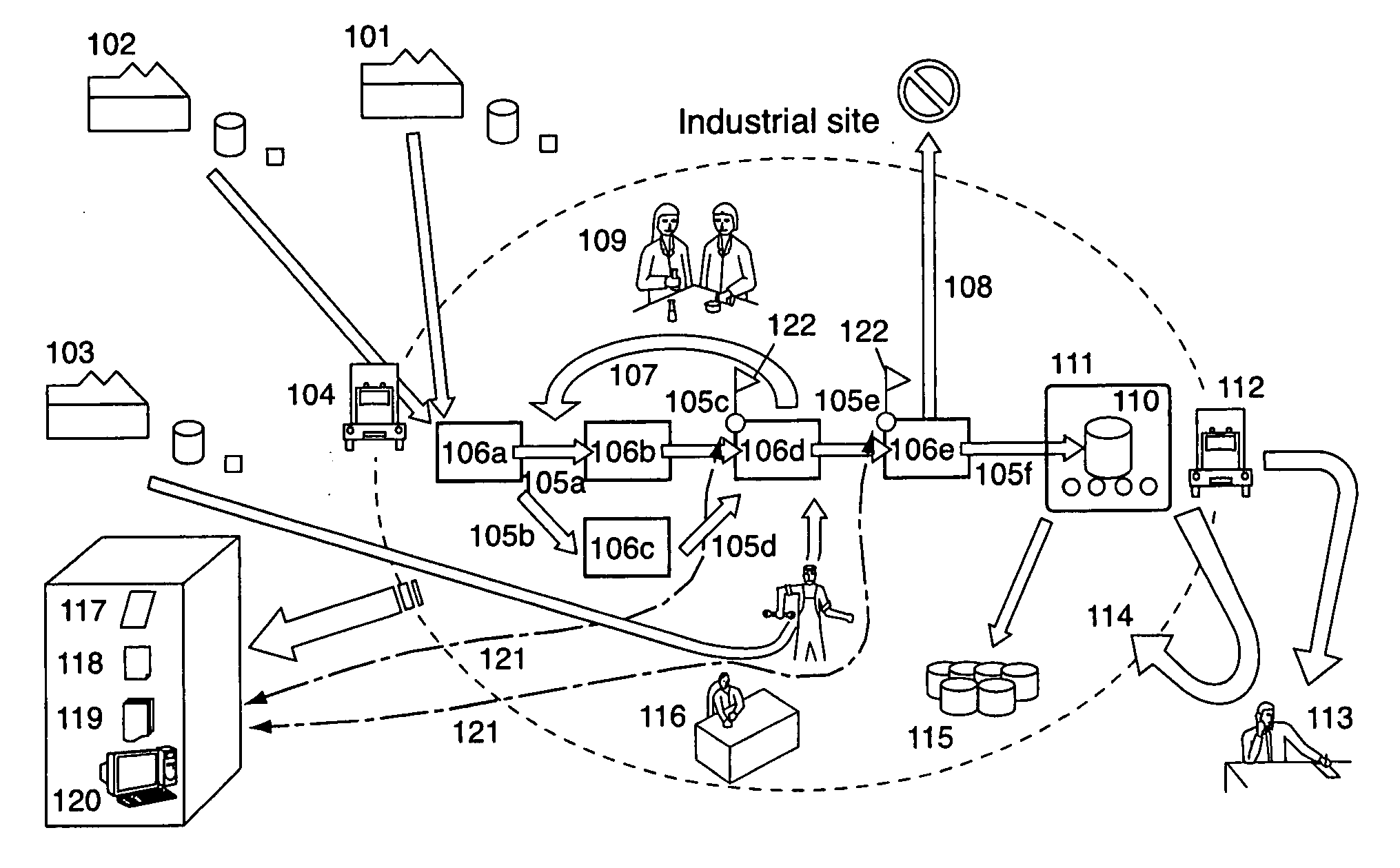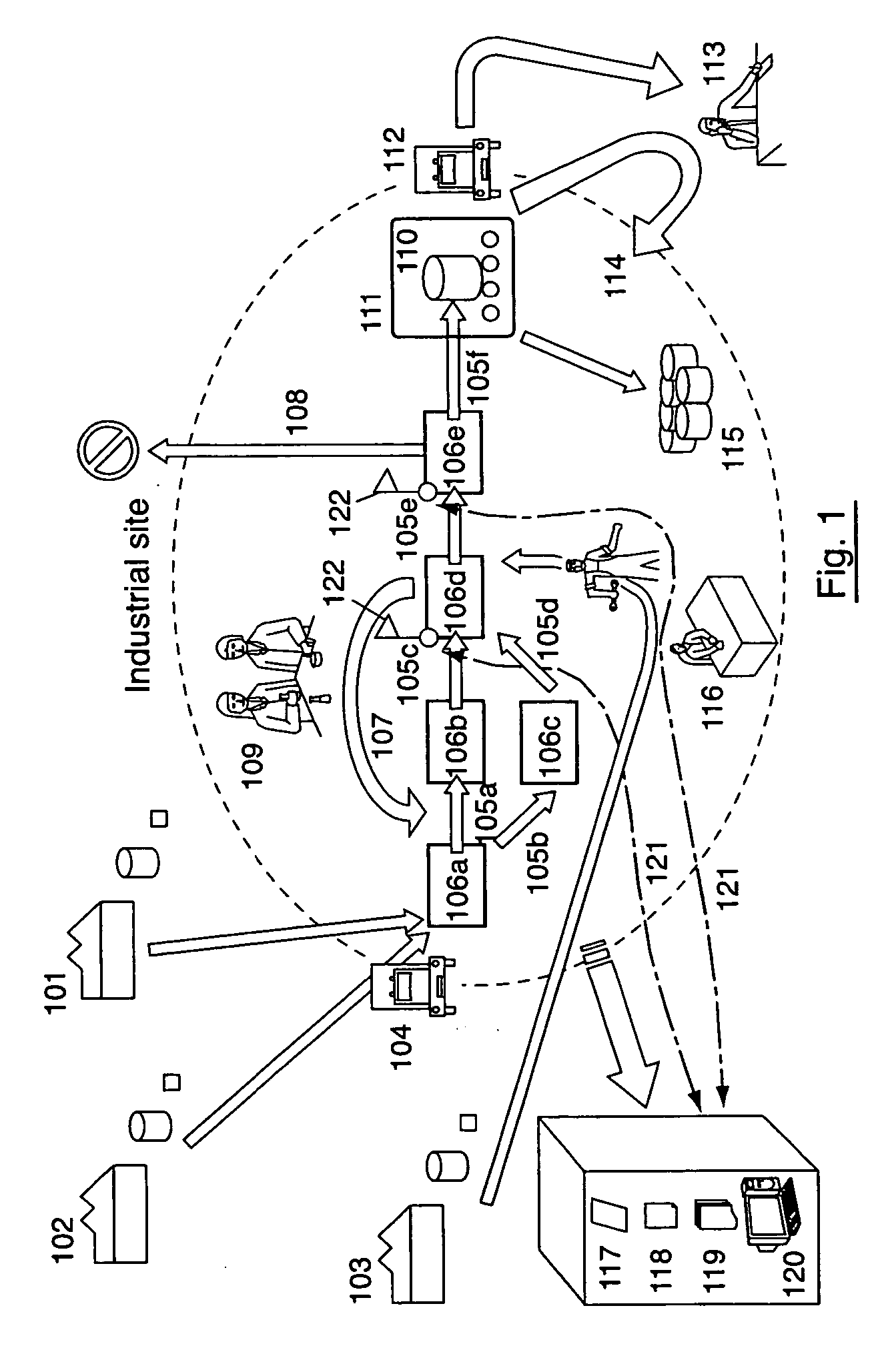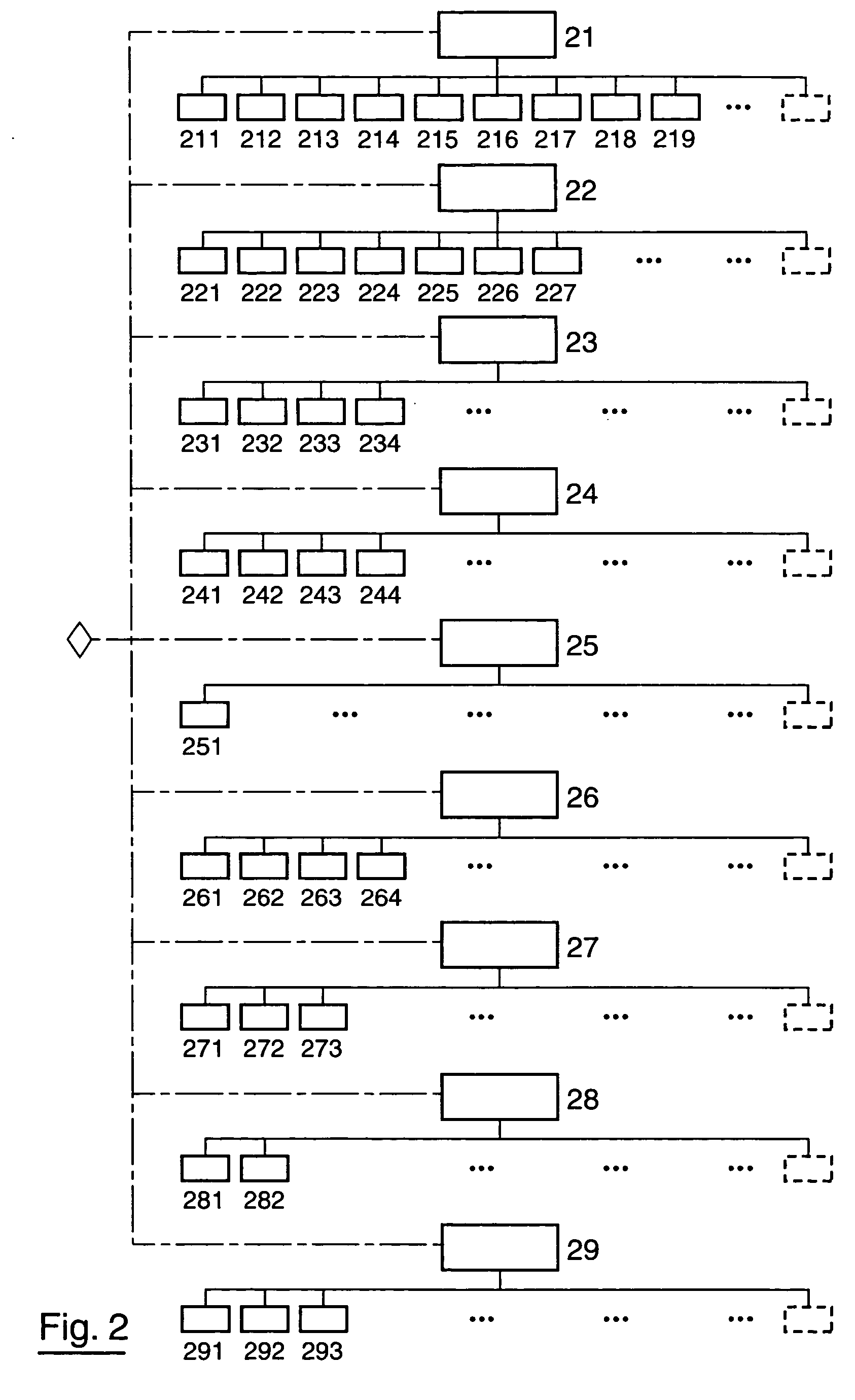Procedure of expertise of exhaustibility, of efficiency and of the feasibility of systems of traceability put in place on an industrial site, notably in the agro-food sector
a traceability system and industrial site technology, applied in the field of automatic monitoring or traceability of products, can solve the problems of unavoidable traceability management tools, difficult to successfully, quickly and efficiently identify all other products, and difficulty for operators in the farm-produce sector to control all risks associated with the life path of food products
- Summary
- Abstract
- Description
- Claims
- Application Information
AI Technical Summary
Benefits of technology
Problems solved by technology
Method used
Image
Examples
second embodiment
[0172] In the invention, the criteria 221, 222 and 223 (renamed 2213, 2223, 2233 respectively) apply exclusively to reception vouchers, an additional criterion 228 includes the characteristics of these same criteria for delivery forms only and criterion 224 is broken down according to four distinct criteria applicable to saving of: [0173] information about raw materials and primary processed materials (criterion 2241); [0174] information about products being manufactured (criterion 2242); [0175] manufacturing steps (criterion 2243), [0176] manufacturing problems (criterion 2244).
[0177] In this same embodiment, criterion 226 is replaced by two criteria 2261 and 2262, such that criterion 2261 exclusively relates to traceability of by-products and criterion 2262 relates exclusively to traceability of repackaging.
[0178] In this second embodiment, the degree of importance of criteria 2213, 2241, 2242, 2243, 2244, 2261 and 228 is high, the degree of importance of criteria 2223 and 2262 ...
fourth embodiment
[0181] In the invention, a second value 302 justifies assignment of the traceability certificate and the consumer label, if it reaches a threshold value 303 for each theme. This value 302, for which the assignment method is shown in FIG. 3B, is calculated based solely on criteria with a high degree of importance. It is obtained forming the image by the function ƒp,q of the numerical result of multiplying all values in the set of constants (320 or 330) obtained for each criterion with a high degree of importance.
[0182] Furthermore, with the technique according to an embodiment of the invention, the value 303 corresponds to the image by the function ƒp,q of the product of (β)p with (γ)q, where p and q denote the total number of criteria with moderate and low degrees of importance respectively for the theme concerned.
[0183] We will now present an application of an embodiment of the invention to an industrial bakery site for manufacturing of bread intended for the production of sandwic...
PUM
 Login to View More
Login to View More Abstract
Description
Claims
Application Information
 Login to View More
Login to View More - R&D
- Intellectual Property
- Life Sciences
- Materials
- Tech Scout
- Unparalleled Data Quality
- Higher Quality Content
- 60% Fewer Hallucinations
Browse by: Latest US Patents, China's latest patents, Technical Efficacy Thesaurus, Application Domain, Technology Topic, Popular Technical Reports.
© 2025 PatSnap. All rights reserved.Legal|Privacy policy|Modern Slavery Act Transparency Statement|Sitemap|About US| Contact US: help@patsnap.com



